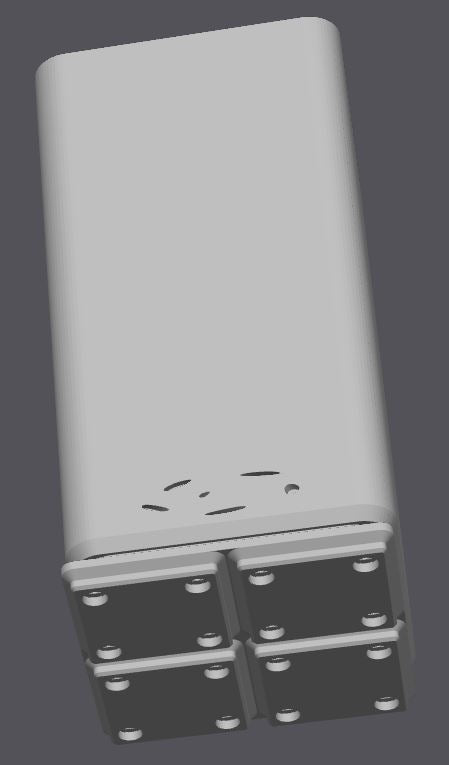
3d Printed Desktop Planter series
Share
Designing the Future of Container Gardening – One 3D Printed Pot at a Time
FDM printing meets resilient grow design, rooted in years of experimentation.
From Ivy to Innovation: A Lifelong Obsession with Root Systems
I started container gardening when I was twelve—with ivy, in a plastic cup, for a school science fair. Since then, I’ve experimented with kifu-sho bonsai, long-cycle perennials, and vegetative cloning techniques that push the limits of plant life spans. I once harvested two pounds of tomatoes on Christmas Day by modulating light cycles. I’ve selectively bred my own line of Black Hungarian × Romanian Bird’s Eye peppers, and I’ve been cultivating a clover strain through over a decade of reseeding.
My goal? Resilient systems that thrive despite neglect, optimized for urban density and deep botanical insight.
3D Printing Pots: Function First
Using FDM 3D printing, I began developing my own container designs—built not just to look good, but to grow smarter. Each pot is engineered around root aeration, moisture efficiency, and material resilience. I’ve been working on five core designs, tweaking geometry and flow channels to suit different watering styles: drip, drain-through, and soak.
CAM proved to be a journey of its own—and designing with a mouse is… far from ideal. But after hundreds of hours of trial and error, real cool stuff started to emerge. for starters with default settings this is a terrible process for manufacturing water tight anything [Kariz et al., 2020 – Mechanical Properties of FDM Printed Composites] talks a little bit about this
Grown from the Ground Up (and Down)
This hasn’t been about theory—this is five years of seasonal testing, material science, and real-world grows. I’ve designed planters that thrive in:
- Screen of Green (ScrOG)
- Sea of Green (SoG)
- Flood-and-drain hydro tables
Each design has been iterated across multiple filaments—PLA, PETG, ABS, and carbon-infused variants—all tested for their interaction with humidity, UV, and microbial substrate behavior. its not that I didnt trust studies like [Díaz et al., 2022 – PLA-based Biocomposites Review] its that I needed to know how it would or wouldnt interact with root zone.
Coming Summer 2025: Grow-Ready Launch
This summer, I’ll be releasing the first two production-ready containers:
- 1L desktop planters
- 3×3 seed starter pods
And yes—they’re compatible with Gridfinity.
Files will be free to download. For those without a printer, I offer shipping at cost (bonus points if you send me pics of what you grow in them!).
Root Intelligence: Dual Zone Nutrient Delivery
One of the most effective techniques I’ve built into these pots is a dual root zone system:
- Top layer: traditional soil or media for feeder roots
- Bottom zone: controlled nutrient exposure through soaking to a marked depth
This method leverages capillary action and selective root zone feeding—allowing deeper roots to draw nutrients while the top zone remains oxygen-rich. I alternate between gentle top watering and infrequent base soaking to maintain ideal moisture gradients. [Martínez-Ballesta et al., 2013 – Root-to-Shoot Signaling Under Stress] I dont believe this process is stressful per sey but it does seem to encourage towo distinct types of root zones which upon autopsy are clearly distinct in the average desnity of the root fibers.
The results? Explosive growth. Tomatoes, peppers, and cannabis all respond visibly within days when properly dialed in.
Join the Journey: Open-Source Gardening
If you’re still reading, thank you. I’ll be posting a follow-up soon on nonstandard and sculptural planter designs—less about yield, more about joy.
Want updates?
- 📩 Sign up for notifications (got to find the klaviyo sign up link)
- 📁 Download the files (available Summer 2025)
- 📸 Send me pics of your setup—I really want to see what thrives in your care
Let’s all build something beautiful, resilient, and radically open—together.
In pursuit of sustainable design, rooted experimentation, and beauty that grows. 🌱